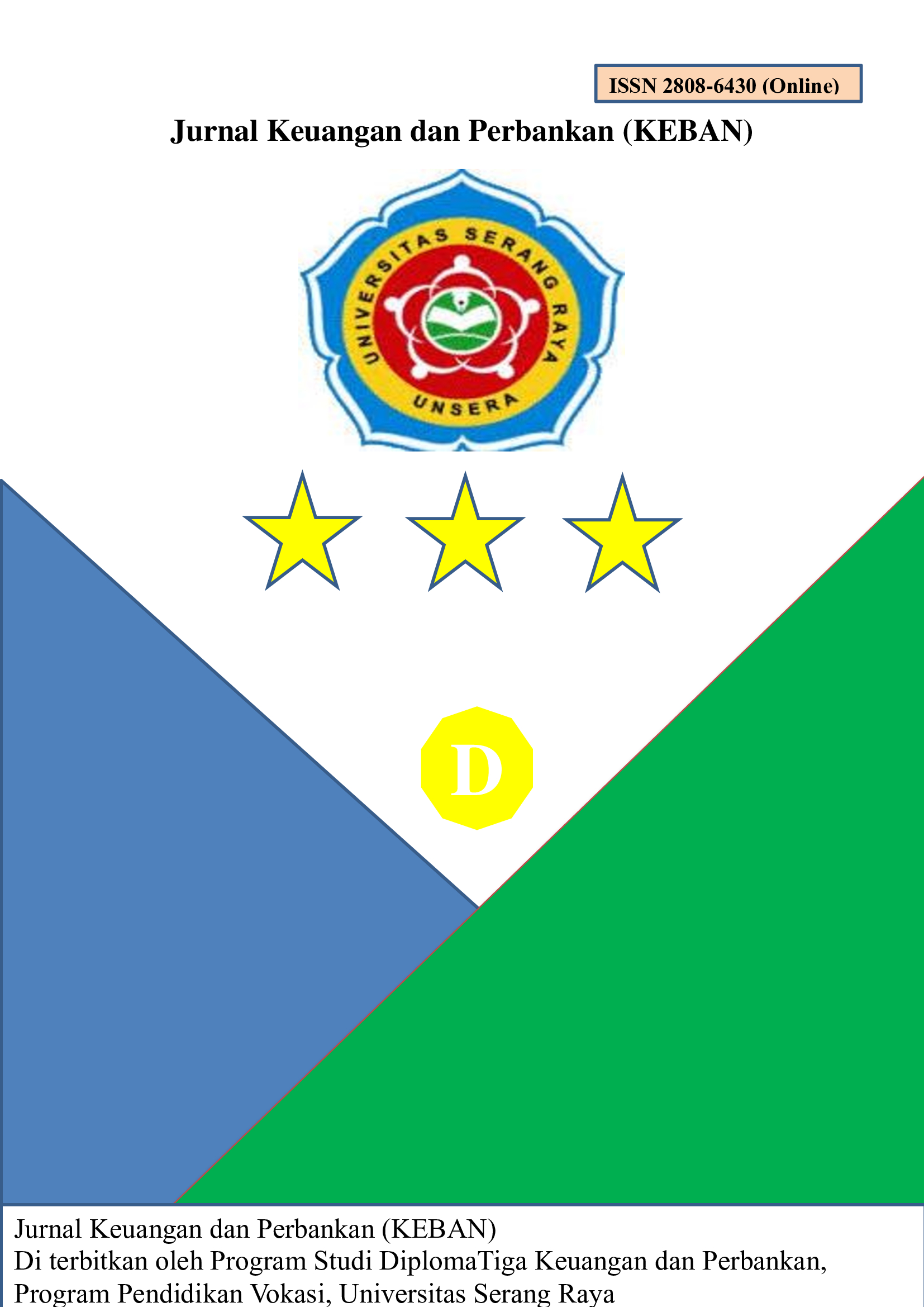The Effect of Market Shere and Bank Characteristics on Profitability Bank
DOI:
https://doi.org/10.30656/jkk.v2i2.7196Keywords:
Return On Assets, Market Shere, Operational Cost-Operating Income, Loan to Deposit RatioAbstract
Managerial Efficiency Theory of Profit explains that companies that are managed efficiently will earn profits above the average normal profit. This study aims to test this theory through the influence of Loan to Deposit Ratio (LDR), Market Shere and Operational Cost-Operating Income (BOPO) on Return On Assets (ROA) of Conventional Banks in Indonesia which are listed on the Indonesia Stock Exchange for the 2013-2017 period. By using a purposive technique, there were 8 sample companies according to the criteria for research needs and as many as 40 observational data for 5 years of observation. The research method uses a quantitative approach with multiple regression analysis tools. The results of this study prove partially that Market Shere and LDR have a positive effect and BOPO has a negative effect on ROA, while simultaneously Market Shere, LDR and BOPO have a significant effect on ROA
References
Athoillah, M. (2010). "Market Structure of the Indonesian Banking Industry".Journal of Indonesian Applied Economics, Vol.4(No.1), 1-10
Avrita, R. D., & Pangestuti, I. R. (2016). "Analysis of the Influence of CAR, NPL, LDR, NIM and BOPO on Bank Profitability".Diponegoro Journal of Management, Vol.5(No.2), 1-13
Belangkaehe, R., Engka, D., & Mandey, D. (2014). "Analysis of Market Structure, Behavior and Performance of the Indonesian Banking Industry for the 2008-2012 Period".Efficiency Scientific Periodical Journal, Vol.14(No.3), 43-55
Belkhaoui, S., Lakhal, L., Lakhal, F., & Hellara, S. (2014). Market structure, strategic choices and bank performance: a path model. Managerial Finance, 40(6), 538-564.
Berger, A.N. 1995. “The Profit Structure Relationship in Banking Test of Market Power and Efficient Structure Hypothesis.†Journal of Money, Credit, and Banking, Vol.27, pp. 404- 431
Fahmi, I. (2014).Introduction to Financial Management Theory and Questions and Answers. Bandung: Alphabet.
Friant (2017).Fund Management and Bank Health. Jakarta: Rineka Cipta
Ghozali, I. (2013).Multivariate Analysis Application with IBM SPSS 21 Program. Semarang: Diponegoro University
Ilusmawati, N. C., & Nuswantara, D. A. (2014). "Analysis of the Influence of Market Forces and Efficiency Structures on Bank Return On Assets (ROA).Journal of Management Science, Vol.2(No.4), 1140-1141.
Paisley. (2015).Financial Statement Analysis. Jakarta: PT RajaGrafindo Persada
Lukman, Dendawijaya. 2005. Second Edition Banking Management. Jakarta: Ghalia
Mensi, S., & Zouari, A. (2010). Efficient structure versus market power: Theories and empirical evidence. International journal of Economics and Finance, 2(4), 151-166.
Mirzaei, A., Moore, T., & Liu, G. (2013). "Does Market Structure Matter on Banks Profitability and Stability? Emerging vs. Advanced Economics". Journal of Banking & Finance, Vol.37(No.8), 2920-2937
Mulyaningsih. (2011). "Competitive Conditions in Banking Industry : An Empirical Analysis of The Consolidation, Competition and Concentration in the Indonesia Banking Industry between 2001 and 2009". University of Canberra.
Nabieu, G. A. (2013). The structure, conduct and performance of commercial banks in Ghana. European Journal of Business and Innovation Research, 1(4), 34-47.
Naylah, M. (2010). "The Influence of Market Structure on the Performance of the Indonesian Banking Industry".Thesis, Diponegoro University Postgraduate Program, Semarang
Pertiwi, Y. N. (2013). "The Influence of Banking Industry Market Structure and Bank Characteristics on Profitability of Conventional Banks in Indonesia in the 2006-2011 Period".Thesis, Faculty of Economics and Business, Diponegoro University, Semarang
Rahardja, P., & Manurung, M. (2017).Introduction to Economics (Microeconomics & Macroeconomics) Third Edition. Jakarta: Faculty of Economics, University of Indonesia
Raharjo, D. P. A., Setiaji, B., & Syamsudin, S. (2014). The Influence of Car, Npl, Ldr, Bopo, and Nim Ratios on the Performance of Commercial Banks in Indonesia.Journal of Competitive Management, 16(2), 7-12.
Revida, R., & Septiarini, D. F. (2017). "Analysis of the Influence of Market Structure and Market Behavior on the Performance of Islamic Commercial Banks in Indonesia and Malaysia in 2011-2015".Journal of Islamic and Applied Economics, Vol.4(No.5), 367-380.
Rivai, V. (2007). dkk.Bank and Financing Isntituution manajement Conventional & shariah System.
Rofiatun, N. F. (2016). "The Influence of Market Share and Banking Indicators on the Profitability of Indonesian Sharia Commercial Banks".Journal of Islamic Economics Lariba, Vol.2(No.1), 13-24
Saputri, M. R., & Kusumawardhani, A. (2016). "Analysis of the Influence of Market Concentration, Market Share and Financial Ratios on the Financial Performance of National Foreign Exchange Private Commercial Banks in Indonesia in 2010-2014".Diponegoro Journal of Management, Vol.5(No.3), 2337-3792
Sopa, M.M. (2017). "The Influence of Market Structure, Diversification Strategy and Bank Characteristics on Conventional Banks in Indonesia".Thesis, Department of Business Management, Batam State Polytechnic
Sutardjo. (2011). "Market Structure of Indonesian Banking Competition in the Consolidation Period".Journal of Management and Agribusiness, Vol.8(No.2), 211-222
Wibowo. (2013).Work management. Jakarta: Rajawali Press
Yogiyanta, C. W. (2013). "Analysis of the Influence of CAR, NIM, LDR, NPL and BOPO on the Profitability of Studies at Public Banks that Go Public on the Indonesia Stock Exchange for the 2002-2010 Period".Strategic Business Journal, Vol.22(No.2), 94-111







